-
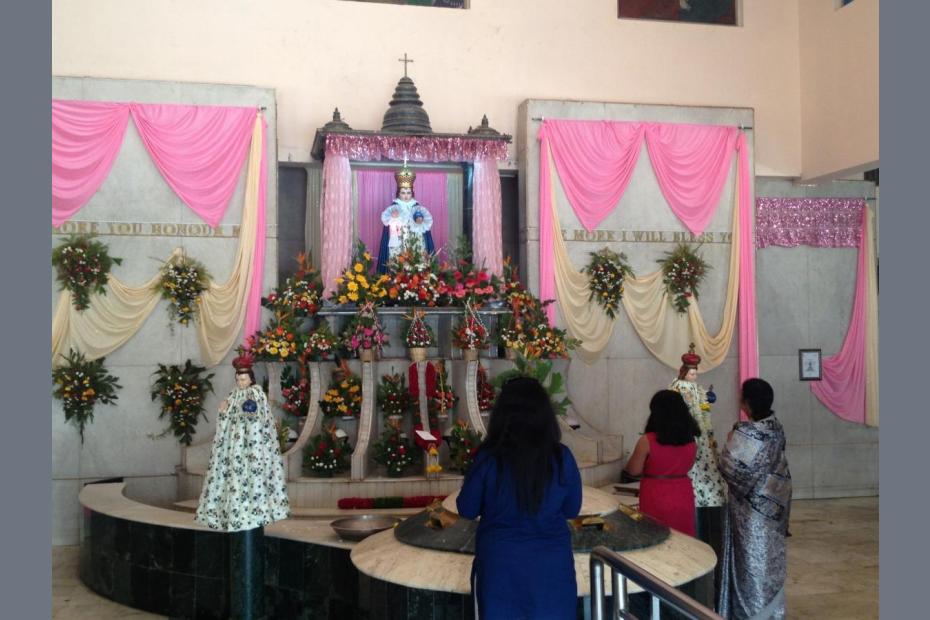
Miraculous Infant Jesus Shrine, Bengaluru.
-
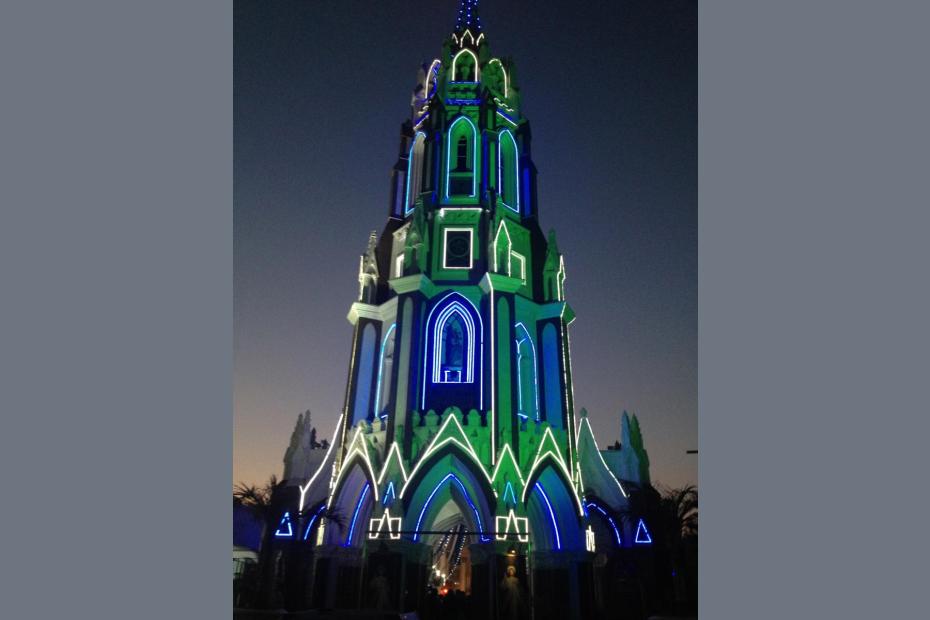
The main tower of Our Lady of Good Health, Bengaluru. As is true at many shrines and churches, dark hours - early morning and evening, before and after work, are the busiest times.
-
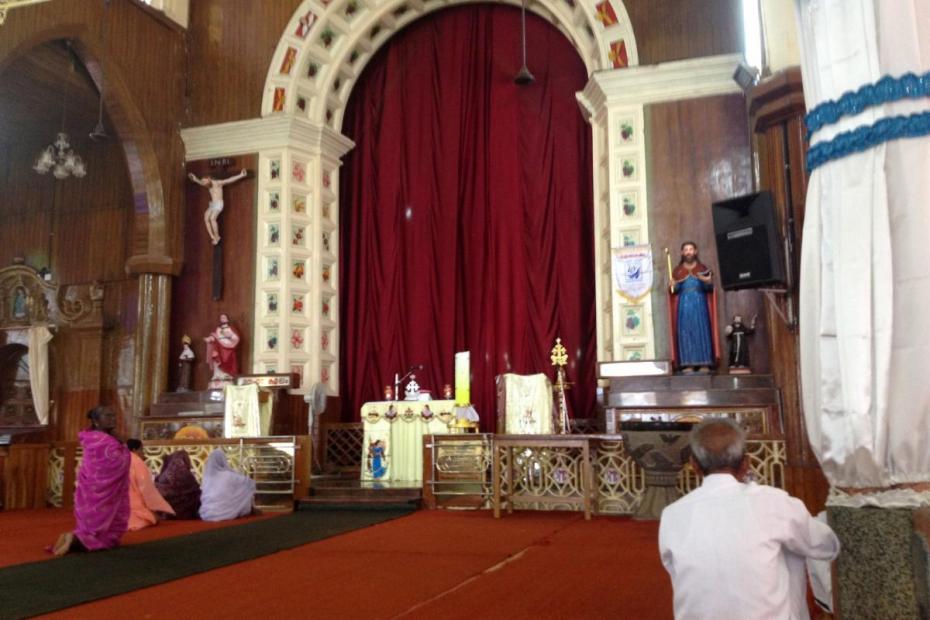
Worshipers arrive early to pray at St. Mary's Forane Church, a Syro-Malabar Church in Kuravilangad. The red drape covering the sanctuary is opened during liturgy.
-
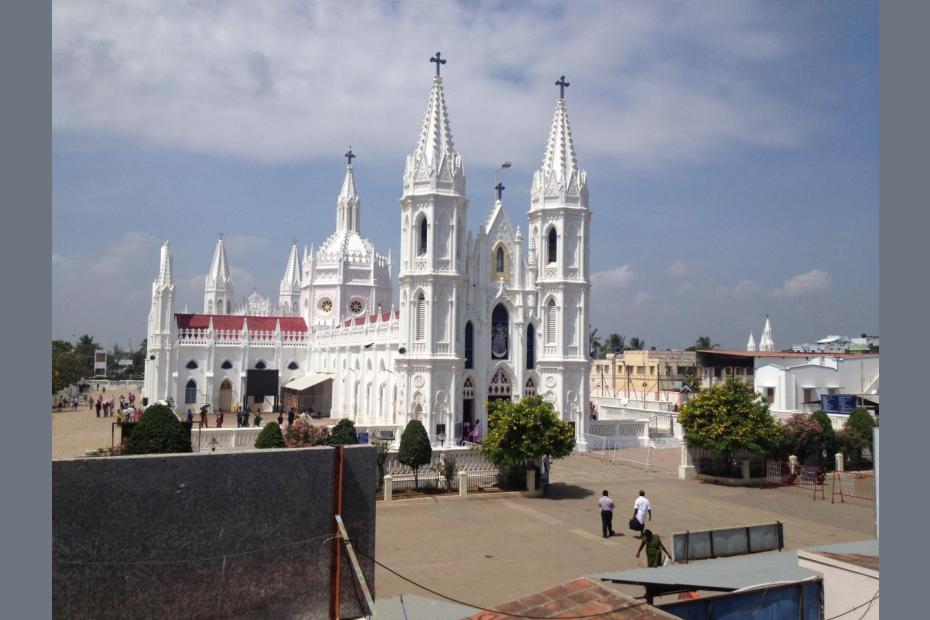
The basilica church at the shrine of Velankanni.
-
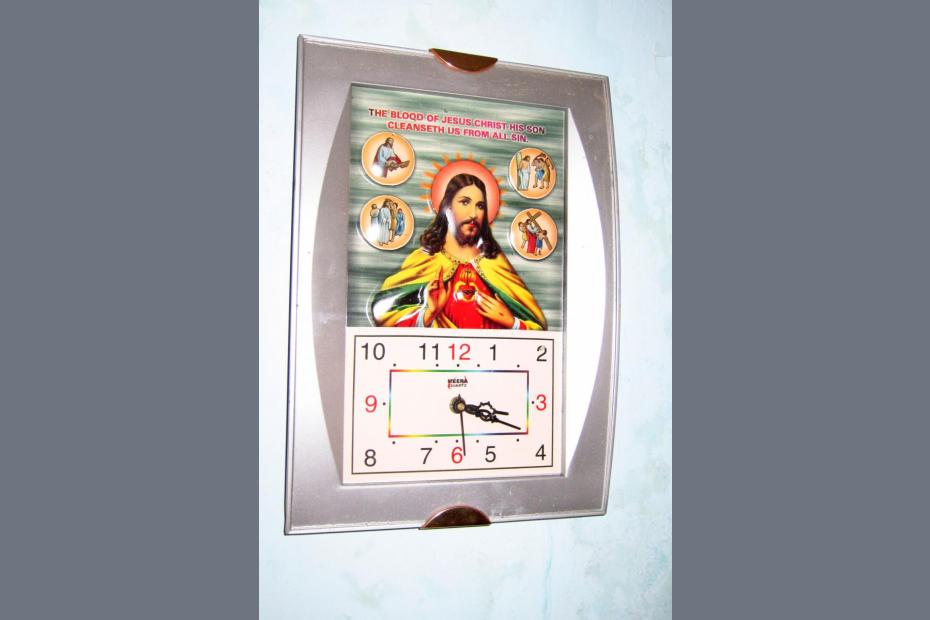
-
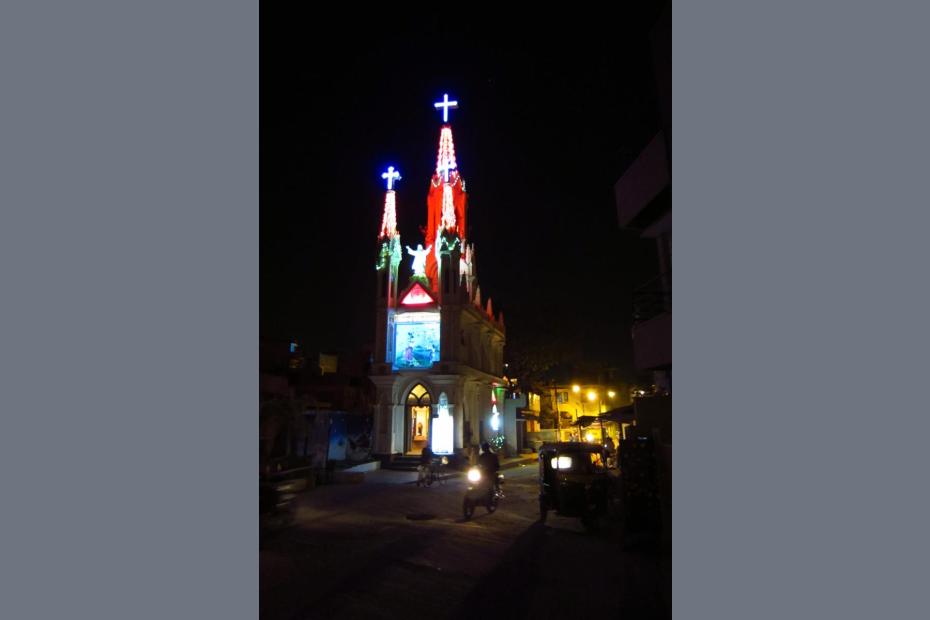
The Annai Vailankanni devotional chapel, Bangalore, a freestanding chapel in honor of our Lady of Vailankanni
-
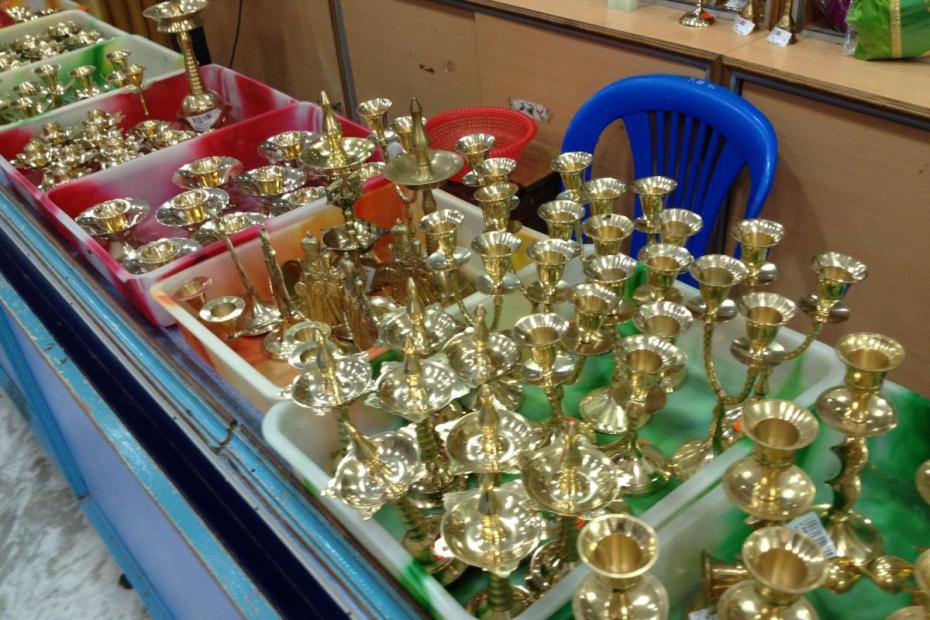
Bronze pieces, for sale at Velankanni Shrine. Oil lamps, which have an important place in Hindu homes, are also important in Catholic ones, along with crosses and candlesticks.
-
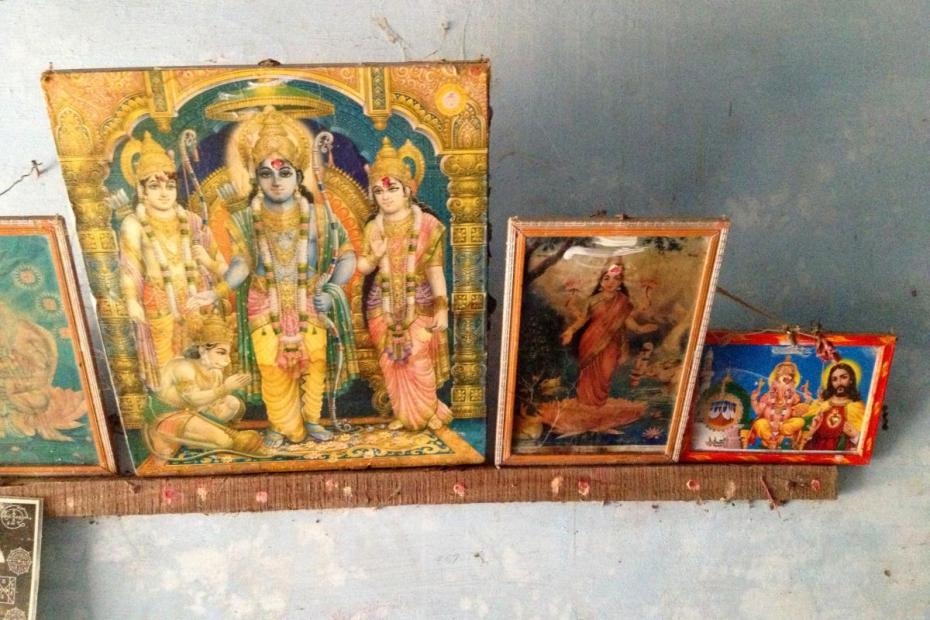
A small business in Tamil Nadu has a range of Hindu Religious images on display. To the right, an image includes a trio of Muslim, Hindu and Catholic images.
-
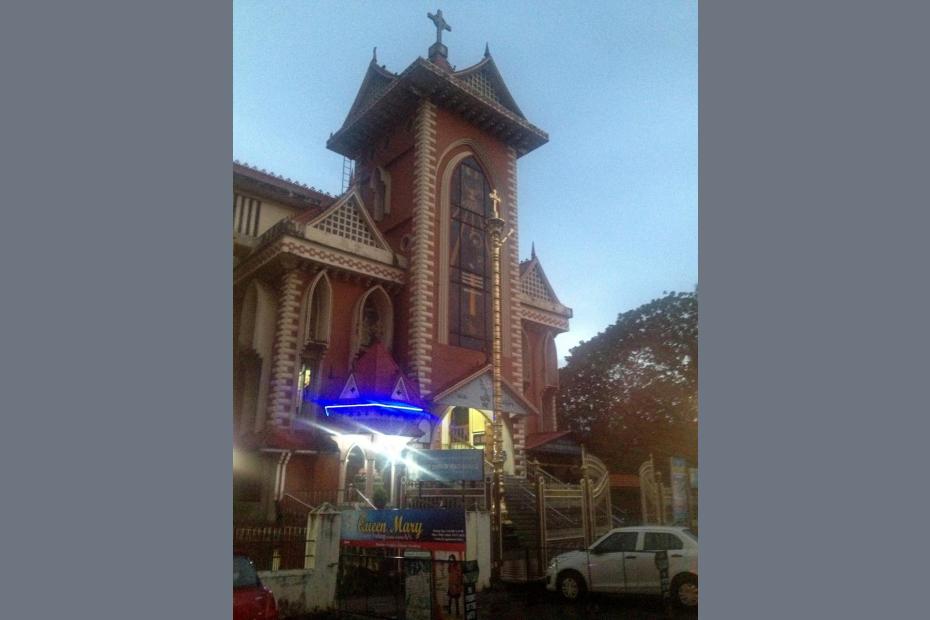
St. Mary, Queen of Peace Syro-Malankara basilica, Thiruvananthapuram, Kerala.
-
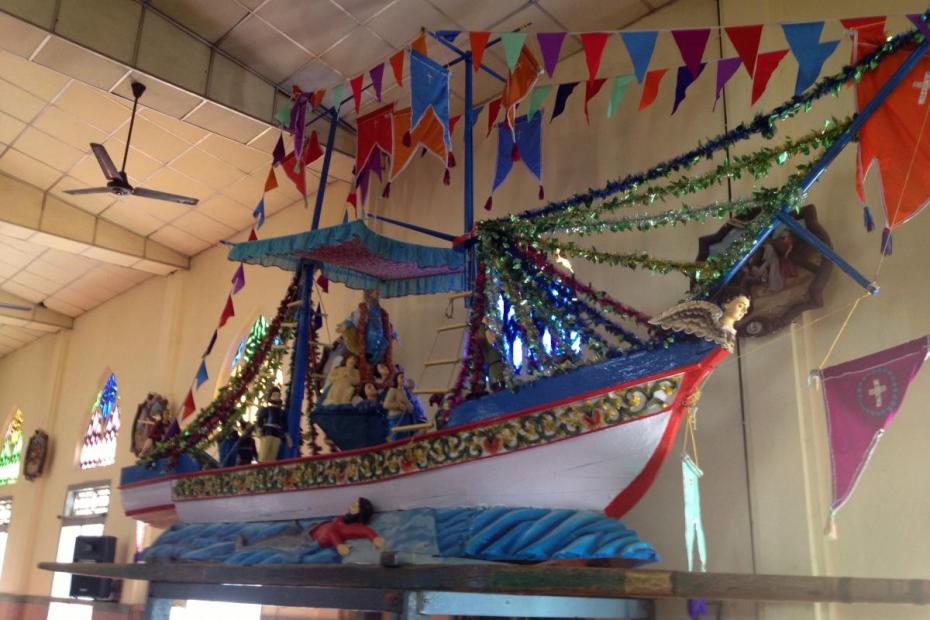
The large ship used in the celebrated Kappalottam festival at St. Mary's Forane church, commemorating the story of Jonah.
-
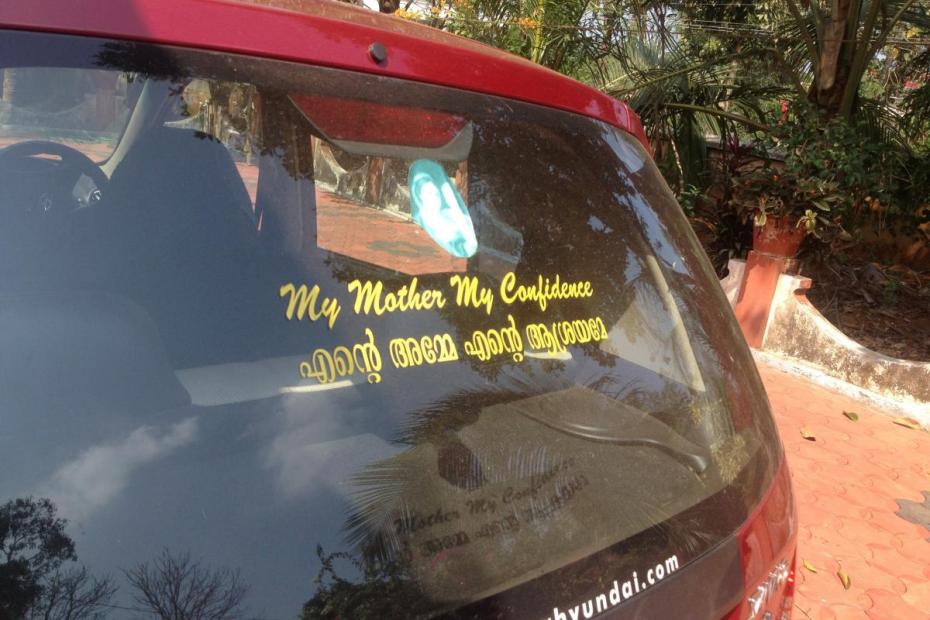
-
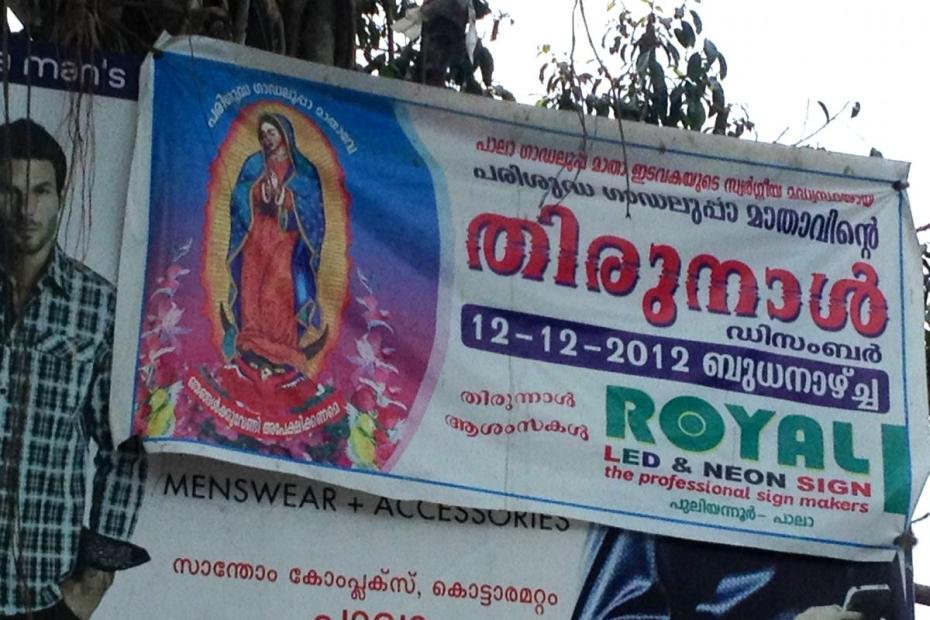
Catholic businesses often use religious images in advertising, even this image of Our Lady of Guadeloupe. Kerala, India.
Churches tend to be built in stone or concrete, and to reflect one of three eras — whether a Portuguese baroque Jesuit style, or a whitewashed French Gothic style from 19th- and 20th-century missionaries, or painted concrete contemporary styles in the postcolonial era.
Visually and practically, it is difficult to distinguish the home images of a Syro-Malabar Catholic from a Syro-Malankara or a Latin rite Catholic. The same is true of churches, though the interior the Latin rite churches often tend to be more colorful than the Syrian rite churches. Painters often apply a very bright, Indian color palette to otherwise European-styled images of the Sacred Heart, the Holy Family, St. Jude, the Divine Mercy image. In Bangalore, pink and white is a recurrent color scheme at the altar.











